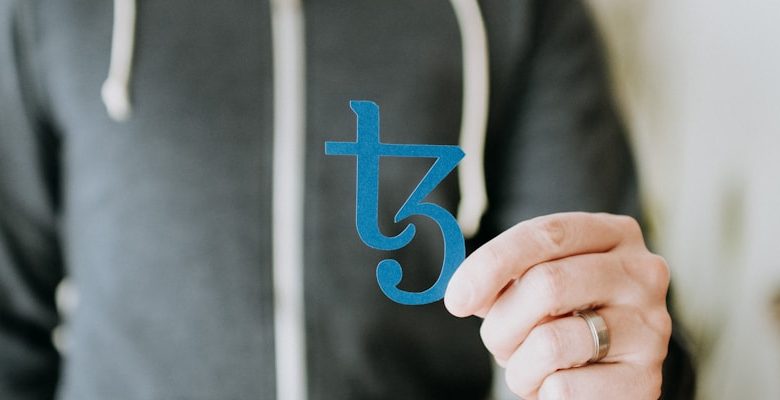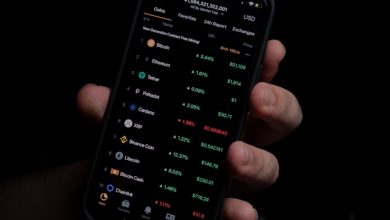The Graph (GRT): Indexing Blockchain Data for Developers

- Understanding The Graph (GRT) and its role in blockchain development
- How The Graph (GRT) is revolutionizing data indexing in the blockchain space
- A deep dive into the technology behind The Graph (GRT) and its benefits for developers
- Exploring the use cases of The Graph (GRT) in decentralized applications
- The future potential of The Graph (GRT) in shaping the blockchain ecosystem
- Tips for developers on leveraging The Graph (GRT) for efficient data querying
Understanding The Graph (GRT) and its role in blockchain development
The Graph (GRT) is a decentralized protocol that enables developers to efficiently query and index data from the blockchain. By using The Graph, developers can easily access and retrieve specific information from various blockchains without having to run their own infrastructure. This significantly reduces the time and resources required to build decentralized applications (dApps) and allows developers to focus on creating innovative solutions.
The Graph plays a crucial role in blockchain development by providing a decentralized indexing protocol that organizes and processes data in a scalable and efficient manner. This allows developers to build dApps that can quickly retrieve and display real-time data from the blockchain, such as token prices, transaction history, or user information. By leveraging The Graph’s indexing capabilities, developers can create more interactive and user-friendly dApps that offer a seamless experience for users.
Understanding how The Graph works is essential for developers looking to harness the power of blockchain technology. By using subgraphs, which are custom mappings that define how specific data should be indexed and queried, developers can optimize their dApps to efficiently retrieve the information they need. This flexibility and customization make The Graph a valuable tool for developers seeking to build scalable and decentralized applications that interact with blockchain data in real time.
How The Graph (GRT) is revolutionizing data indexing in the blockchain space
The Graph (GRT) is a groundbreaking protocol that is transforming how data is indexed on the blockchain. By providing developers with a decentralized and efficient way to query data, The Graph is revolutionizing the way applications are built on the blockchain. This innovative technology enables developers to easily access and retrieve data from various blockchains, making it easier to build decentralized applications that are fast, reliable, and secure.
With The Graph, developers can create subgraphs, which are custom indexes that define how data is structured and queried. These subgraphs can be deployed on The Graph’s network of nodes, allowing developers to efficiently access data without having to run their own infrastructure. This not only saves time and resources, but also ensures that the data is accurate and up-to-date.
The Graph’s decentralized approach to data indexing is a game-changer for developers looking to build on the blockchain. By providing a reliable and efficient way to access data, The Graph is empowering developers to create innovative applications that can leverage the full potential of blockchain technology. Whether it’s querying transaction data, tracking token balances, or retrieving metadata, The Graph makes it easy for developers to access the information they need to build cutting-edge decentralized applications.
A deep dive into the technology behind The Graph (GRT) and its benefits for developers
The technology behind The Graph (GRT) is a revolutionary tool that allows developers to efficiently index blockchain data. This indexing process enables developers to easily query and retrieve specific data from the blockchain, saving time and resources. The Graph’s decentralized network of Indexers ensures that data is always available and up-to-date, making it a reliable source for developers looking to build decentralized applications.
One of the key benefits of using The Graph is its flexibility. Developers can create custom subgraphs to index specific data sets, allowing them to tailor their queries to meet their unique needs. This customization ensures that developers have access to the exact data they require, without having to sift through irrelevant information.
Another advantage of The Graph is its scalability. The network is designed to handle a large volume of data and queries, making it suitable for projects of all sizes. Whether you are building a small dApp or a large-scale decentralized application, The Graph can accommodate your needs with ease.
Furthermore, The Graph’s open-source nature promotes collaboration within the developer community. By allowing developers to share subgraphs and work together to improve indexing efficiency, The Graph fosters innovation and growth in the decentralized ecosystem. This collaborative approach not only benefits individual developers but also contributes to the overall advancement of blockchain technology.
In conclusion, The Graph (GRT) offers developers a powerful tool for indexing blockchain data efficiently. With its flexibility, scalability, and collaborative nature, The Graph is poised to become an essential component of the decentralized development process. By leveraging this technology, developers can streamline their workflows, access the data they need, and contribute to the continued evolution of blockchain technology.
Exploring the use cases of The Graph (GRT) in decentralized applications
The Graph (GRT) provides developers with a powerful tool for efficiently querying and retrieving data from various blockchains. By using indexing and querying capabilities, developers can easily access the specific data they need without having to navigate the complexities of blockchain data structures. This makes it easier for developers to build decentralized applications (dApps) that require real-time data updates and interactions.
One of the key use cases of The Graph (GRT) is in decentralized finance (DeFi) applications. DeFi applications often require real-time access to on-chain data such as token prices, liquidity pools, and transaction histories. By using The Graph (GRT) to index and query this data, developers can create DeFi applications that are more efficient, scalable, and user-friendly.
Another use case of The Graph (GRT) is in non-fungible token (NFT) marketplaces. NFTs have become increasingly popular in recent years, with artists, musicians, and other creators using them to tokenize and sell digital assets. By using The Graph (GRT) to index metadata associated with NFTs, developers can create NFT marketplaces that provide users with a seamless browsing and purchasing experience.
The future potential of The Graph (GRT) in shaping the blockchain ecosystem
The future potential of The Graph (GRT) in shaping the blockchain ecosystem is immense. As more developers and projects adopt this decentralized protocol for indexing blockchain data, the possibilities for innovation and growth are endless. By providing a reliable and efficient way to access and organize data on the blockchain, The Graph is empowering developers to build powerful applications that can revolutionize various industries.
With its decentralized network of Indexers, Curators, and Delegators, The Graph ensures that data queries are processed quickly and accurately, without relying on a centralized authority. This not only enhances the security and reliability of blockchain applications but also promotes a more inclusive and collaborative ecosystem.
Furthermore, The Graph’s support for multiple blockchains and subgraphs allows developers to access a wide range of data sources and customize their queries to suit their specific needs. This flexibility and scalability make The Graph a valuable tool for building decentralized applications that can scale with the growing demands of the blockchain industry.
In conclusion, The Graph (GRT) is poised to play a crucial role in shaping the future of the blockchain ecosystem by providing developers with the tools they need to access and organize blockchain data efficiently. With its decentralized approach and support for multiple blockchains, The Graph is paving the way for a more interconnected and innovative blockchain landscape.
Tips for developers on leveraging The Graph (GRT) for efficient data querying
The Graph (GRT) is a powerful tool for developers looking to efficiently query data on the blockchain. By following these tips, developers can leverage The Graph to streamline their data querying process:
- Utilize subgraph templates to create custom data schemas that fit your specific needs.
- Take advantage of indexing strategies to optimize query performance and reduce latency.
- Consider using dynamic querying to fetch only the data you need, minimizing unnecessary data transfer.
- Stay up to date with the latest developments in The Graph ecosystem to take advantage of new features and improvements.
- Collaborate with other developers in the community to share best practices and learn from each other’s experiences.
By following these tips and staying informed about The Graph’s capabilities, developers can make the most of this powerful tool for querying blockchain data efficiently and effectively.



